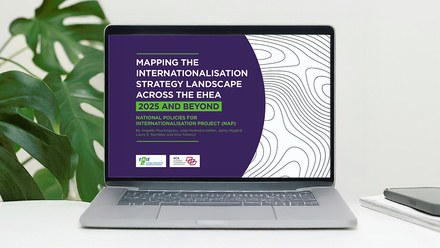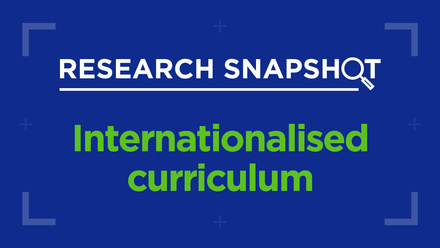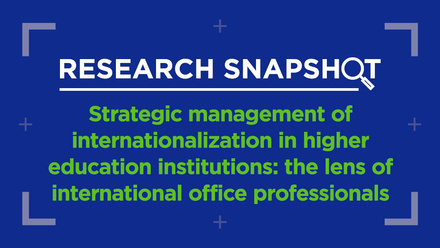Embracing AI in international higher education

Over the past couple of years, universities and students have increasingly embraced AI. At first, there was a lot of hesitation – with some academics initially worrying it might threaten standards and academic integrity. But lately, the conversation has shifted. Instead of fearing AI as an existential threat, many now view it as a powerful tool that can enhance learning and deliver better outcomes.
Luckily, we run the world’s biggest survey of international students (the International Student Barometer), giving us unique insights into students' perspectives. In 2024, we added some questions about AI – covering usage, institutional support and career perceptions.
Key findings
The results are pretty fascinating. We surveyed 4,000 international students worldwide during peak AI debates (late 2024), notably over 45% of students believed AI would have a positive impact on their careers. This surprised many of us (which might reflect generational differences) who tend to worry about AI replacing jobs or causing further harm. That said, many students (over 40%) are still not certain of the long-term impact – which makes sense given how rapidly the technology is evolving.
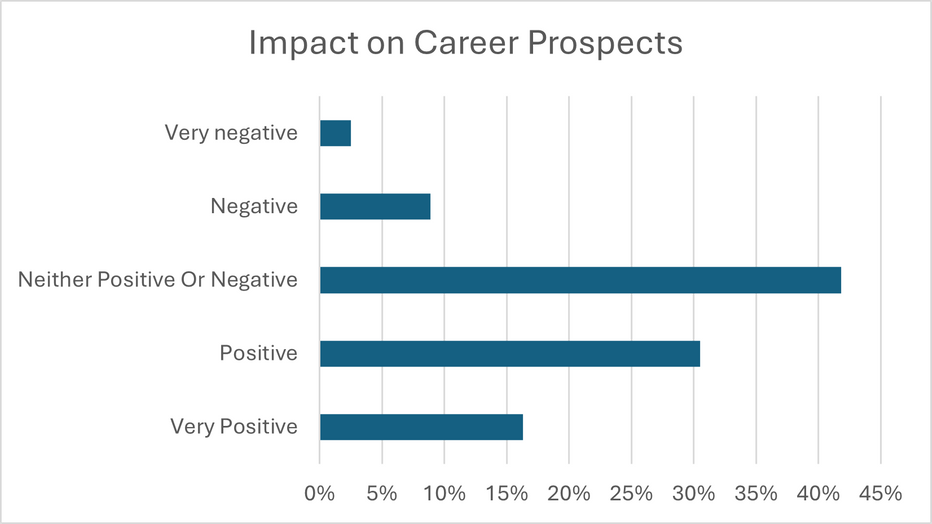
An overwhelming 94% indicated that AI had positively enhanced their learning experience. While most students use AI weekly, rather than daily, its primary application is for research and finding information (67%).
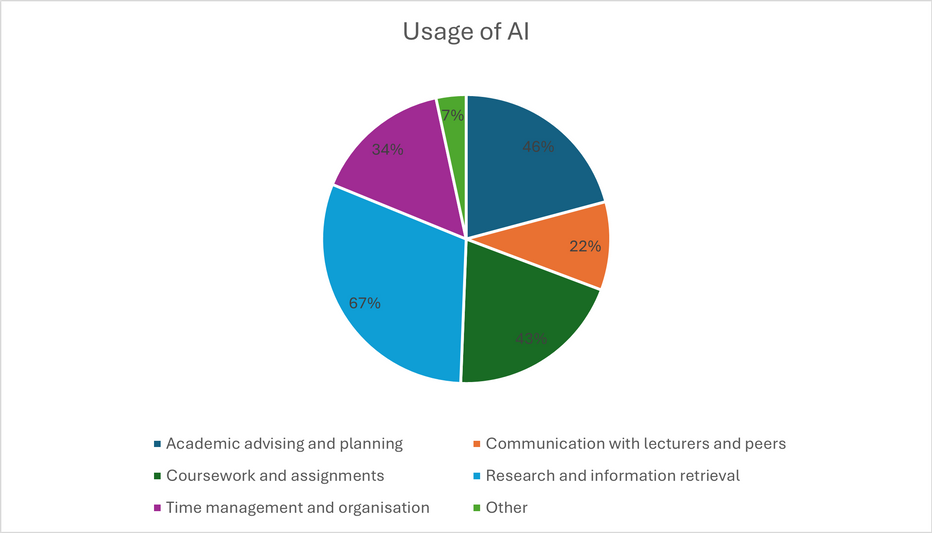
What’s really exciting is how this might change in the next few years. We can expect students will be using AI every day, with students increasingly viewing it as a clear boost to their learning. Universities will hopefully keep improving how they integrate AI into their curricula, making it more seamless – less clunky and more like a natural part of studying.
The richness of data allows us to look at differences between nationalities: for example, 45% of Iranian students reported using AI daily, compared to just 15% of American students.
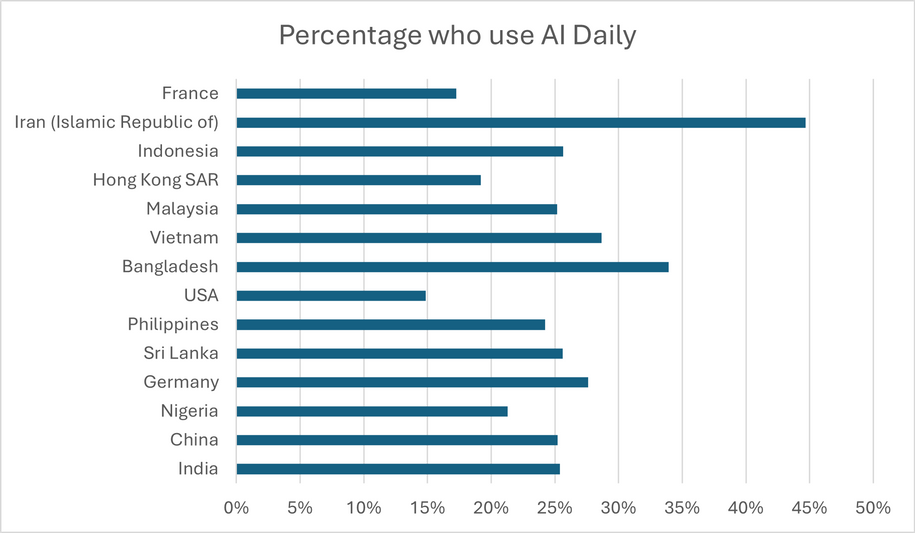
Usage also varies by academic level – 32% of postgraduate researchers use AI daily versus 24% of undergraduates. There are several likely reasons for this, including:
- AI streamlining the complex research needed;
- postgraduate students may be more familiar and adept with AI tools;
- the increased need for time management and efficiency.
Beyond the quantitative data – students' open comments reveal fascinating insights:
A student from the Philippines expressed a common concern that others are gaining an unfair advantage from using AI
''In-class quizzes and tests lack fairness since students can readily use their smartphones to tap into AI assistance. Accessing AI is straightforward; it only takes two clicks (...). Educators need to promote academic integrity.'' (Filipino student in Canada)
Conversely, some students worry about false detections in the plagiarism softwares, for example an Indonesia student in Singapore reported: ''(I am) Very concerned with AI Index detectors as I am afraid of false detections''.
The most pressing concern seems to be institutions' inability to keep up-to-date policies and curricula.
''We were not equipped with a tool or a skill, such as new software, AI tools, etc., to use in the job market.'' (Iranian student in Finland) and as stated earlier the key need to integrate AI: "I truly believe that the school needs to research how to efficiently integrate AI in the learning experience to help students as well as all the learning community thrive." (Mexican student in Canada)
Although many remain positive about the impact of AI on future careers there remain some lingering concerns, for example relating to "The constant shadow of AI looming over the creative fields." (Portuguese student in Europe)
AI – Increasing access and inclusivity
Interestingly, AI is proving to be a powerful tool in promoting accessibility and inclusivity within international higher education. For students who face challenges such as language barriers, dyslexia or other learning difficulties, AI offers personalised support that can significantly enhance their learning experience. For example, AI-powered language translation tools can help non-native speakers better understand course materials, participate more confidently in academic discussions and complete assignments with greater ease. Similarly, AI applications can provide text-to-speech functionalities, enabling students with reading difficulties or visual impairments to access content more easily.
Furthermore, AI-driven tutoring systems can adapt to individual learning paces and styles, offering tailored feedback and additional practice where needed. For students with learning challenges, these tools can present information in more accessible formats, such as simplified language or visual aids, helping to reduce frustration and foster confidence.
Institutions can create a more inclusive environment where all students, regardless of their backgrounds or abilities, have equal opportunities to succeed. This not only helps with individual educational outcomes but also creates a more diverse and equitable academic community which ultimately will enrich the overall learning experience for all.
Finally, here are our top 5 tips for embracing AI based on best practices across our partner institutions.
Embracing AI in higher education: Top 5 tips for institutions
- Integrate AI tools seamlessly into the curriculum
Make AI resources easily available and embedded within teaching and assessment activities. Normalise AI within everyday activities. - Offer training and support for students and staff
Create workshops and online resources to help everyone understand how to use AI ethically and effectively. - Foster a culture of ethical AI development and collaboration
Encourage students and staff to actively participate in discussions about responsible AI development, sharing best practices and collaborating on projects that prioritise transparency, fairness and accountability in AI applications - Leverage AI for inclusive education
Use AI to support students with diverse learning needs—such as language support tools, dyslexia-friendly resources and accessibility features. - Stay updated on AI trends and best practices
AI is evolving fast. Assign a team or designate staff to keep abreast of the latest developments, ensuring your institution remains innovative and competitive.
When institutions tap into AI’s potential thoughtfully and strategically, it can genuinely transform the learning experience – making education more engaging, personalised and accessible globally.
Eager to learn more about this topic?
Listen to our latest podcast ''Getting our heads around AI'' with Brian Piper and Noah Charpentier.


